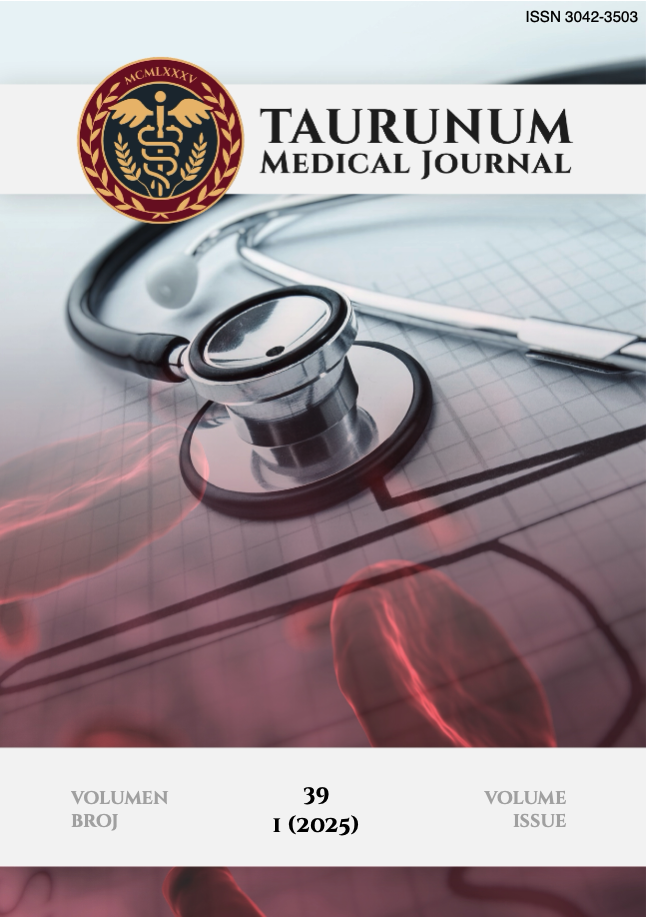Current issue

Volume 39, Issue 1, 2025
Online ISSN: 3042-3511
ISSN: 3042-3503
Volume 39 , Issue 1, (2025)
Published: 31.03.2025.
Open Access
Welcome to Issue 39, No. 1 – the first of our two annual publications for this year. Inside, you'll find a curated selection of articles. Start your year with the essential knowledge and perspectives offered in this timely edition
All issues
Contents
31.03.2025.
Original Article
Challenges in the Diagnosis and Treatment of Small Bowel Bleeding: The Role of Predictive Scores in Clinical Decision-Making
Introduction: Gastrointestinal bleeding represents a serious clinical challenge due to the complexity of diagnosis and the therapeutic options required for effective management. Small bowel bleeding, although relatively rare, poses a significant diagnostic dilemma due to the difficulty in identifying the source and the variability of causes, which differ depending on the patient's age. In the elderly population, vascular malformations are the most common causes, whereas in younger patients, the etiology can be broader, including inflammatory diseases, tumors, and congenital abnormalities. The aim of this study was to investigate the clinical characteristics and outcomes of patients with hemodynamic instability due to small bowel bleeding, with a particular focus on the application of predictive scores (GBS and CRS). Materials and Methods: This retrospective observational study, conducted from January 2023 to January 2024, included 24 hemodynamically unstable patients with diagnosed small bowel bleeding. All patients were assessed using the Glasgow Blatchford Score (GBS) and Clinical Rockall Score (CRS) to evaluate risk and predict clinical outcomes. Demographic data, clinical and diagnostic information were analyzed, with comparative analyses of preoperative, intraoperative, and histopathological findings. Results: The mean age of the patients was 69.8 years, and 79.2% presented with hematochezia. All patients had GBS > 15 and CRS > 6. Conservative treatment was effective in 62.5% of patients, while 37.5% required surgical intervention. The mortality rate was 12.5%. Statistically significant positive correlations were found between GBS and mortality (r = +0.76, p < 0.05) and between GBS and surgical intervention (r = +0.32, p < 0.05). The most common causes of bleeding were vascular lesions, although the source of bleeding was unidentified in 11 patients. Conclusion: Small bowel bleeding remains a major challenge for clinicians, requiring a multidisciplinary approach to diagnosis and treatment. The use of predictive scores such as GBS and CRS aids in assessing severity, guiding decision-making, and planning further treatment.
Nemanja Trifunović, Nebojša Mitrović, Dejan Stevanović, Damir Jašarović, Goran Aleksandrić, Marija Nikolić, Sara Filipović, Jovana Trifunović



